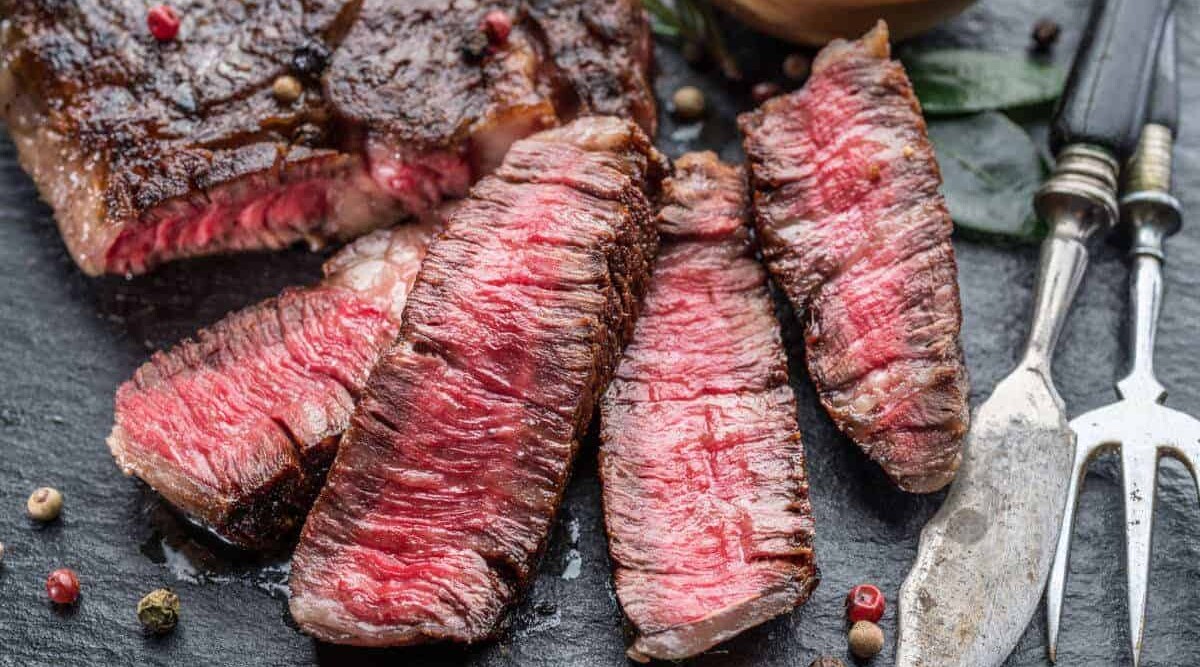
What is a ribeye steak? It’s an outstanding classic that everyone has heard of … I think?!
This cut is known by a few names, my favorite of which is the ‘cowboy steak’, and when cut large with the bone trimmed and exposed, it looks like a formidable meat masterpiece.
When you ask steak connoisseurs what their top three steaks are, the answer is usually the porterhouse, filet mignon, and the ribeye.
While the first two are usually touted as moist and succulent because of their lean nature and lack of fat, a ribeye fan waxes lyrical about the intense beef flavor that comes from its marbling.
In this comprehensive guide to the ribeye, we will discuss topics such as what it is, where it comes from, and why it’s so great.
We also cover how and where to buy a good quality specimen, and how to cook it to perfection with some of our favorite recipes.
Here goes, the ribeye report is ready…
Jump to:
- 1 What is a Ribeye Steak?
- 2 Where Does Rib Eye Steak Come from on the Cow?
- 3 Other Names for the Ribeye Steak
- 4 Flavor, Texture, Fat Content and Tenderness
- 5 Typical Uses
- 6 Rib eye Steak Nutrition
- 7 Buying Ribeye Steak
- 8 Where to Buy Ribeye Steak Online
- 9 Ribeye Steak Price
- 10 Portion Size: How Much Ribeye Steak Per Person?
- 11 How to Prepare Ribeye Steak for Grilling or Smoking
- 12 How to Cook Ribeye Steak on a Grill or Smoker
- 13 3 Best Ribeye Steak Recipes from Around the Web
- 14 Conclusion
What is a Ribeye Steak?
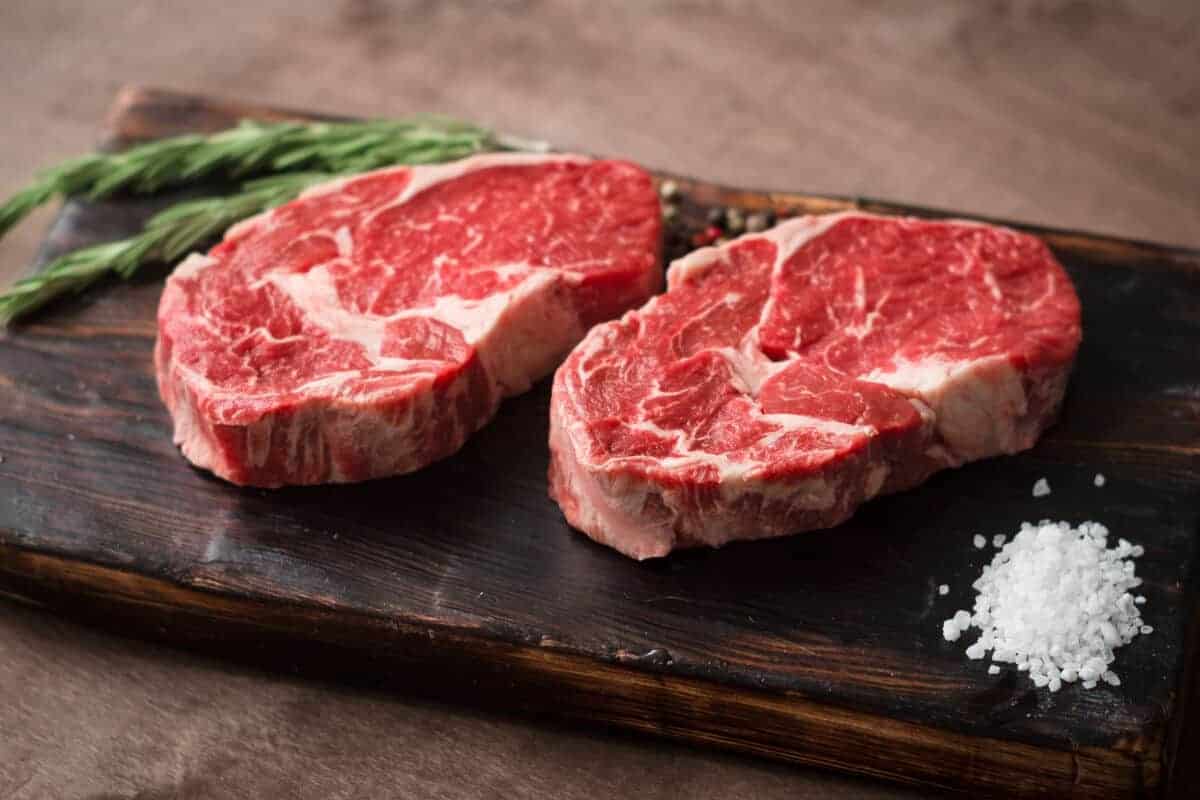
It is a cut of beef that, as its name gives away, it’s part of the rib section of the steer, cut from the rib, the upper rib in fact, that is enriched by a layer of fat surrounding the tender ‘eye’ that separates the two muscles it’s comprised of.
Usually known as a ribeye once the bone has been sliced away, or as a ‘rib steak’ if the bone is left in.
With or without bone, it is a medium to large steak that, on average, will be anywhere between 9oz and 12oz in weight (without the bone) and around 1 to 1 ½ inch thick.
This thickness is important for the ribeye, because if it’s too thin, it becomes easy to overcook.
Here’s a quick video on how to cook it well.
Where Does Rib Eye Steak Come from on the Cow?
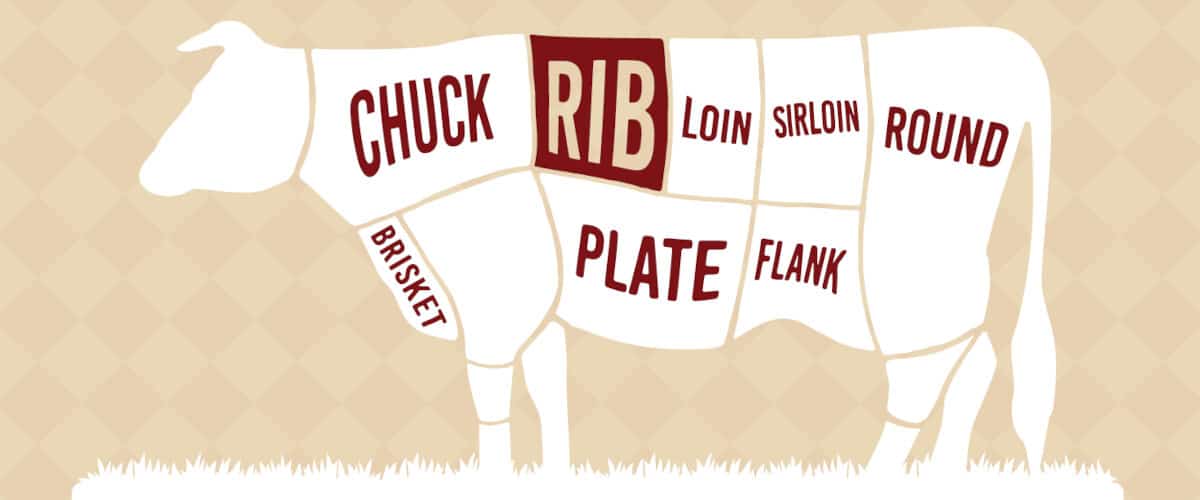
This steak comes from the rib primal, and the rib cage situated under the front section of the backbone.
The steak itself comes from 2 muscles, known as the Longissimus Dorsi, which makes up the majority of the steak, and the Spinalis Dorsi, which makes up the fat cap of the steak.
They both fall between ribs 6 and 12, and as both these muscles engage in minimal exercise, it means, as a whole, it’s nice and tender.
This section of the cow has more naturally occurring intramuscular fat known as marbling compared to many other areas too.
The reason ribeye is easily recognizable to most is its magnificent ‘marbling,’ a term that refers to the thin white strips that run through the meat.
Marbling is intramuscular fat ribbons, (between the muscle fibers) that breakdown to tenderize the meat and give it incredible flavor and moistness.
For other juicy and delicious cuts, visit our guide to the best steaks for grilling, and our beef cuts chart and guide. 🙂
Other Names for the Ribeye Steak
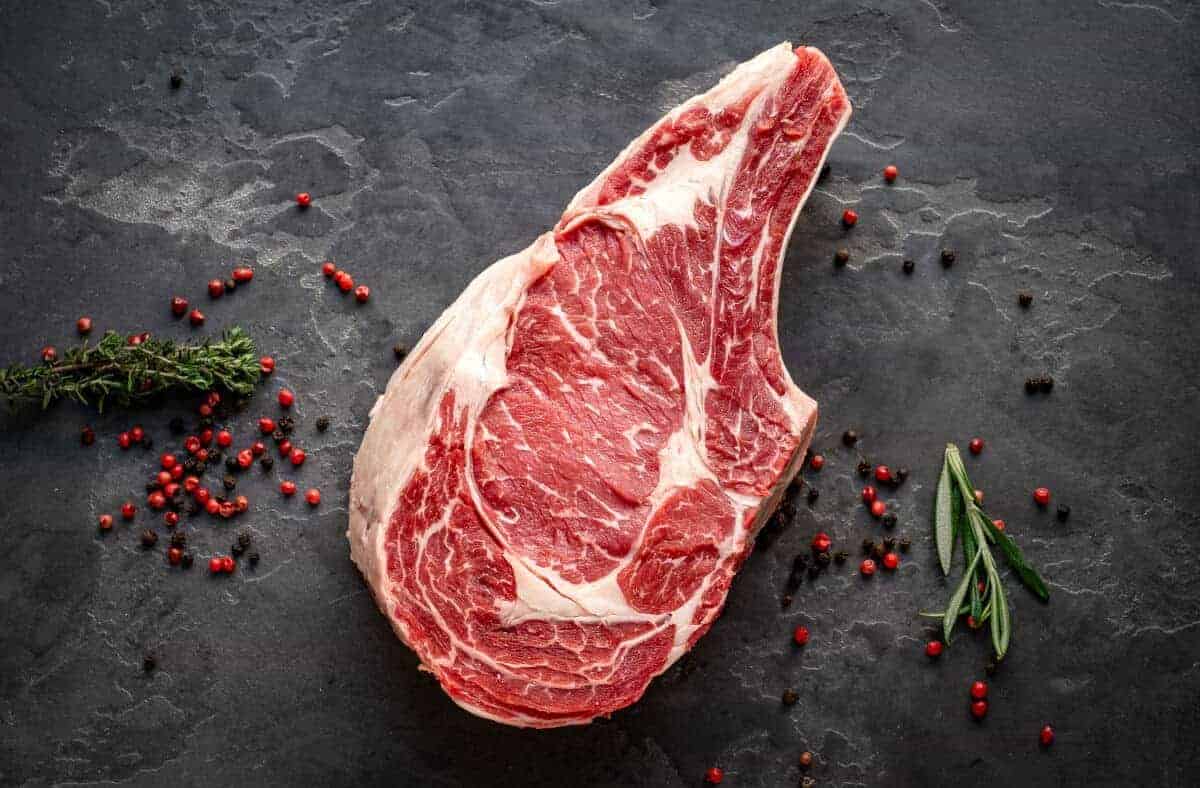
It’s called the ribeye because it contains the muscle from the center, or ‘eye’ of the rib, much like when people refer to the eye of the storm being the most central part.
It’s an easily butchered cut and has been around for as long as people have been eating the mighty cow.
Being one of the original steaks, it has collected a bunch of other names along its journey and is also produced and presented in various forms.
Regardless of what size and look a butcher decides to give it, it must come from the same place and have the essential marbling and fat to be a true ribeye.
Here are some of its other names:
- Delmonico Steak, named after the Delmonico restaurant in the 1960s who popularized a marinated Rib eye steak.
- Scotch Fillet is the name given to it in Australia and New Zealand.
- The cowboy steak, so named as it’s a bigger ribeye, usually 24-30oz with a French trimmed bone left in.
- Tomahawk steak is an extra-large steak so-called because the extra-long 20-inch bone left in, and the 2 ½ inches thick 40 oz steak resembles a tomahawk axe when held by the bone.
Whichever name you prefer and size you choose, you can rest assured that this steak is a belly filler for sure.
Flavor, Texture, Fat Content and Tenderness
The ribeye is renowned for its tenderness AND flavor thanks to its marbling, and it’s these intramuscular fat deposits that liquify upon cooking, which release extra flavor into the meat and self-baste the steak.
It’s second-to-none when it comes to intense beefy flavor, and you don’t get that richness with leaner cuts of meat like the filet.
It also has a fat cap that has no interconnective tissue, so it stays tender and flavorsome too.
Typical Uses
As a worldwide popular cut, the ribeye is typically used as a stand-alone steak.
Recently, however, there have been some derivatives that have gained popularity. One such piece is known as the rib cap, which is a cut that simply takes the fat cap from the whole rib section, essentially ‘stealing’ it from the rib steaks.
The ribeye is known to many as the king of steaks, so some might say this is the king’s crown jewels.
Rib eye Steak Nutrition
| Nutrition | Total Amount (Based on 3 oz Serving) | % Daily Value (based on 2000 calories/day) |
|---|---|---|
| Calories | 190 | 10% |
| Saturated Fat | 4g | 20% |
| Sodium | 60 mg | 3% |
| Protein | 23 g | 46% |
| Iron | 2.2 mg | 10% |
| Zinc | 5 mg | 35% |
In addition to the above, the ribeye includes a good source of niacin, vitamin B6, vitamin B12, zinc, selenium, iron, riboflavin, phosphorus, and choline.
All in all, it is a nutrient and vitamin dense food choice.
Buying Ribeye Steak
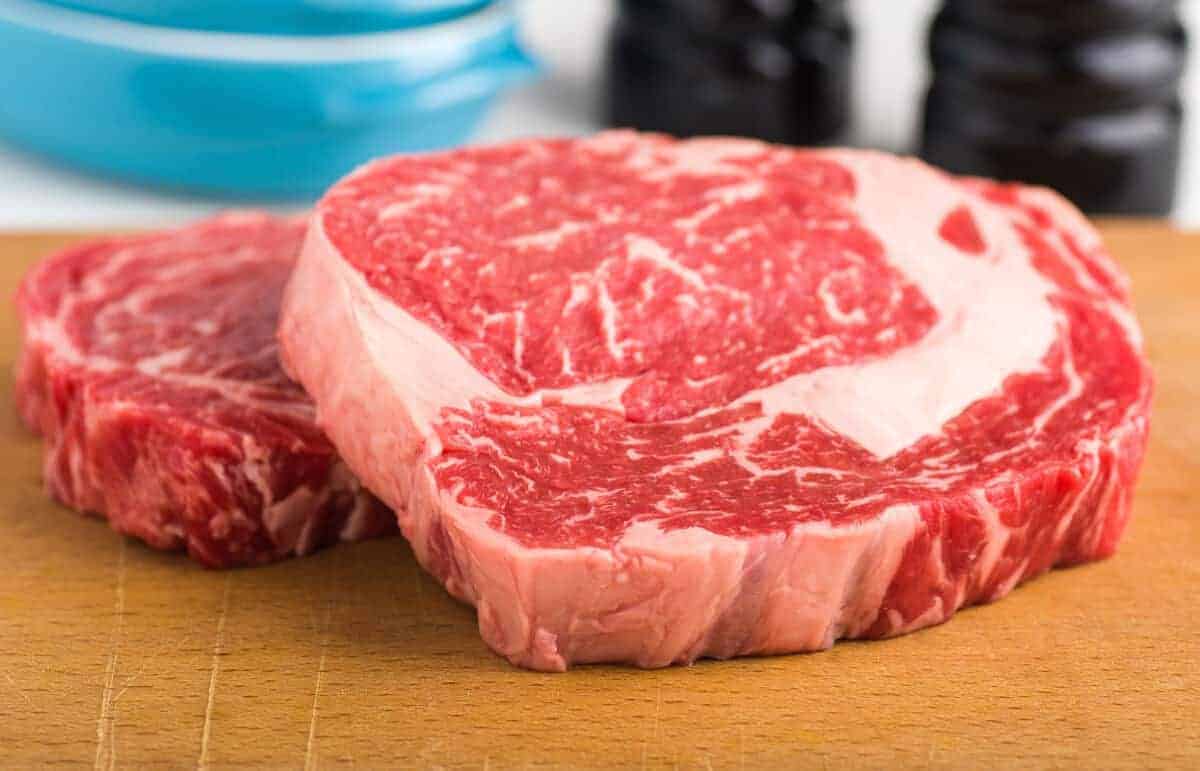
The ribeye is readily available from butchers to supermarkets and online meat markets.
Most will sell it in its various weights and presentation guises, so you will be spoiled for choice. And if a butcher doesn’t know what the ribeye is, then he probably isn’t a butcher!
When buying online, you will have a choice of good, better, or top quality beef with varying prices, so be sure to do your homework on what is right for you and your ethical stance on cattle rearing and production.
Paying for quality accredited meat is always good practice.
Where to Buy Ribeye Steak Online
Online food shopping allows you to sit back, relax, and browse all the available cuts and offers available from quality meat producers.
You can see the origins and ethos of each meat provider and decide which ticks your boxes, and then your order will be shipped to your door ready for you to use.
Here are two online outlets that sell some of the best rib eye steaks available:
Crowd Cow
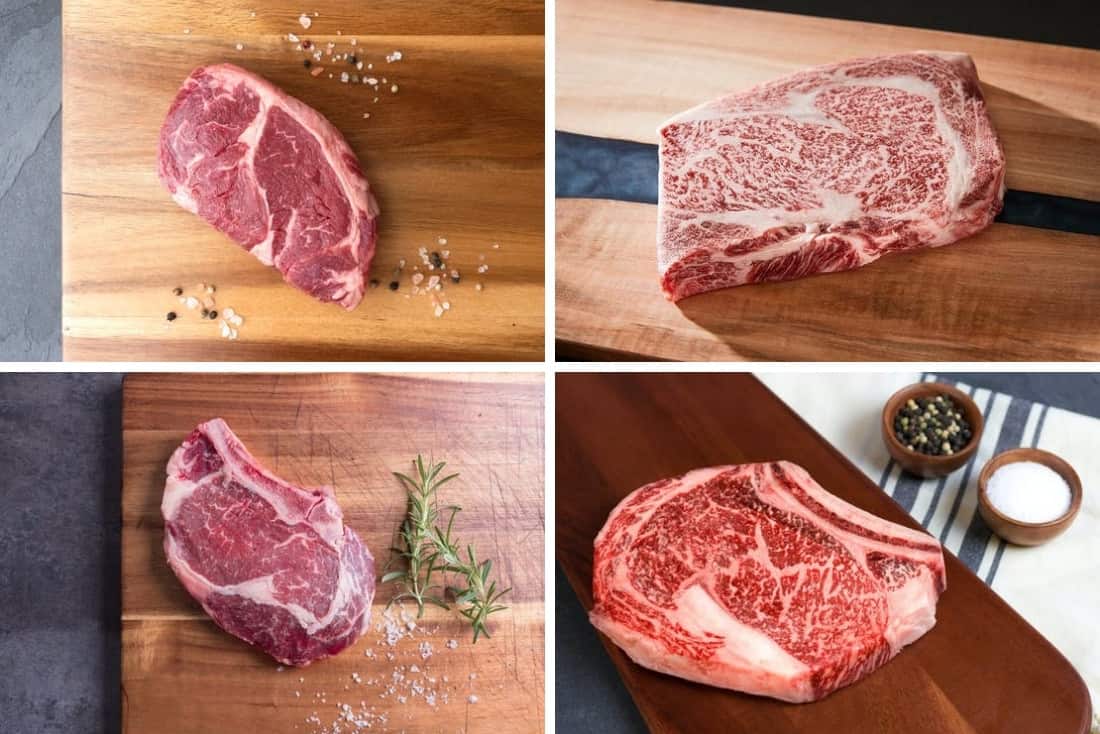
Crowd cow has a variety of ribeye steaks with varied marbling, sourced from many different farms.
Choose from pasture-raised, 100% grass-fed Wagyu or Wagyu cross, bone-in or boneless. A steak for every taste and budget, so you can be as frugal or lavish as you like.
Snake River Farms
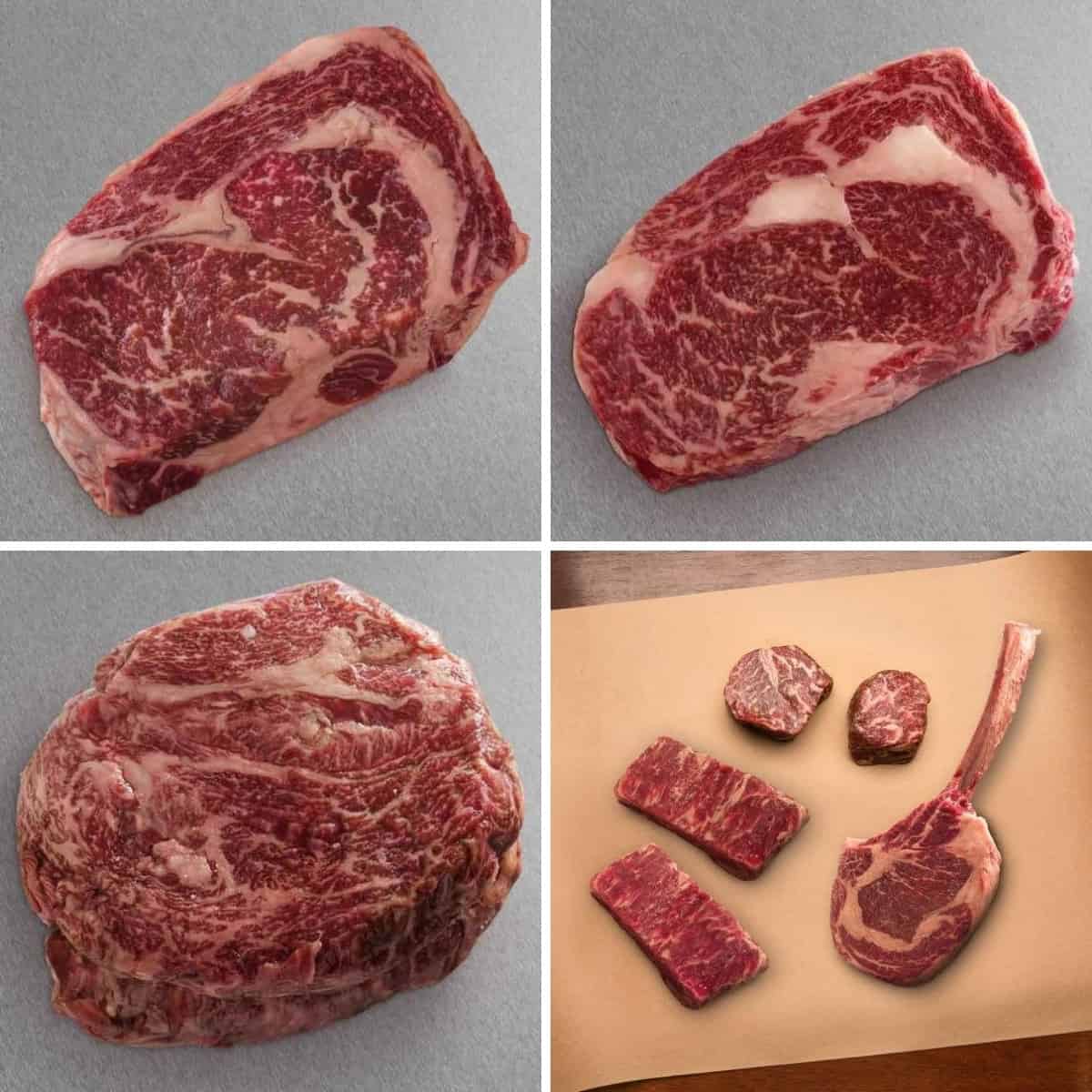
Snake River Farms offers over 20 ribeye product lines from their own specially created breed of Wagyu cross cattle, their American Wagyu Black and American Wagyu Gold grades.
Choose from ribeye filet, ribeye cap, rolled ribeye cap, eye of ribeye roast, and multipacks.
Check Price on Snake River Farms
Ribeye Steak Price
Due to its popularity, it is well known and sought after, so the price is premium wherever you purchase it.
At the time of writing, the cost per-pound for standard rib steaks varies from $23-30 per lb. Across online outlets.
Portion Size: How Much Ribeye Steak Per Person?
How much steak you need per person is dictated by the appetite of those you feed, how you cook it, and what you serve it with.
But for ease of reference, on average they weigh 9oz to 12oz per steak.
Once cooked, the rule of thumb for a good beef steak is a reduction in weight of 25%. So, one steak per person with a side and vegetables will satisfy most people’s hunger.
How to Prepare Ribeye Steak for Grilling or Smoking
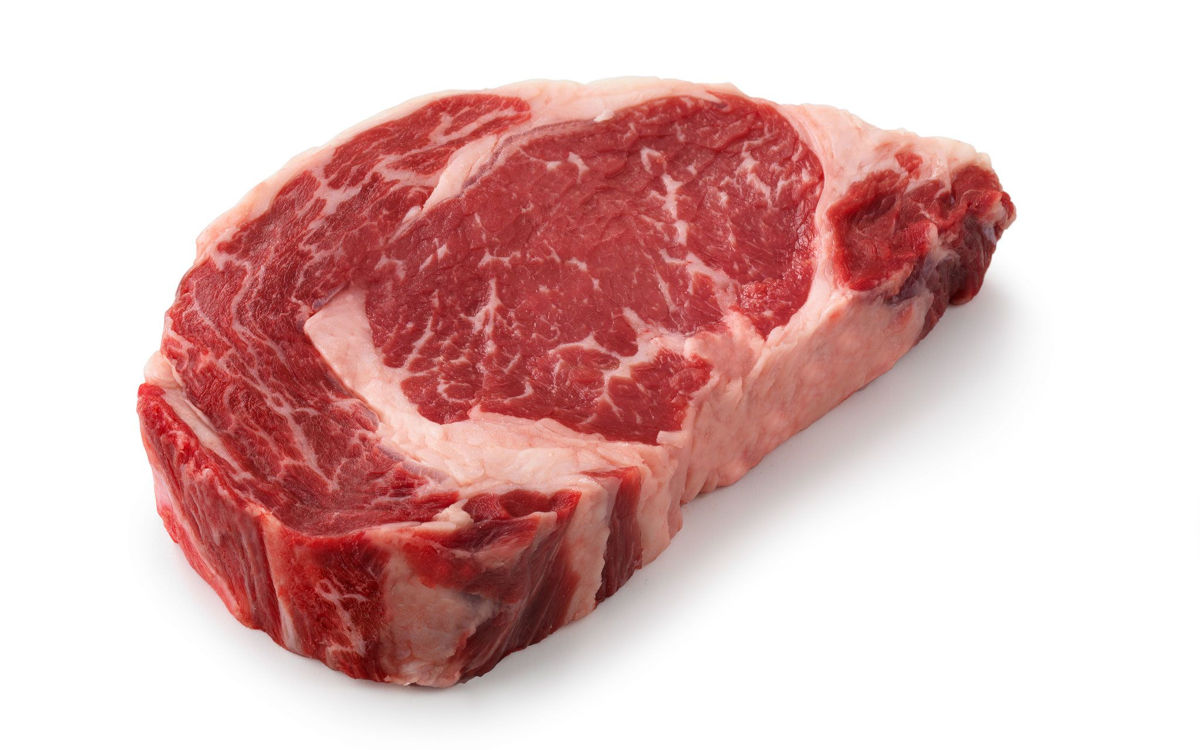
From a good butcher, a ribeye will already be trimmed to perfection either with or without bone and be ready to place straight in the grill or smoker.
You can grill it, but extra care must be taken due to the fat content, which released on to flames can cause some flashback from the fat igniting. So if you aren’t a fan of burnt steak, keep a close eye when it’s on the grill.
You need only a good seasoning with salt and pepper in preparation to cook it, though if using pepper add this AFTER searing, because it can burn and turn bitter.
If you intend to smoke the ribeye, a coating of extra virgin olive oil is advised before seasoning as the cooking process takes longer, and this will allow the meat to retain moisture.
How to Cook Ribeye Steak on a Grill or Smoker
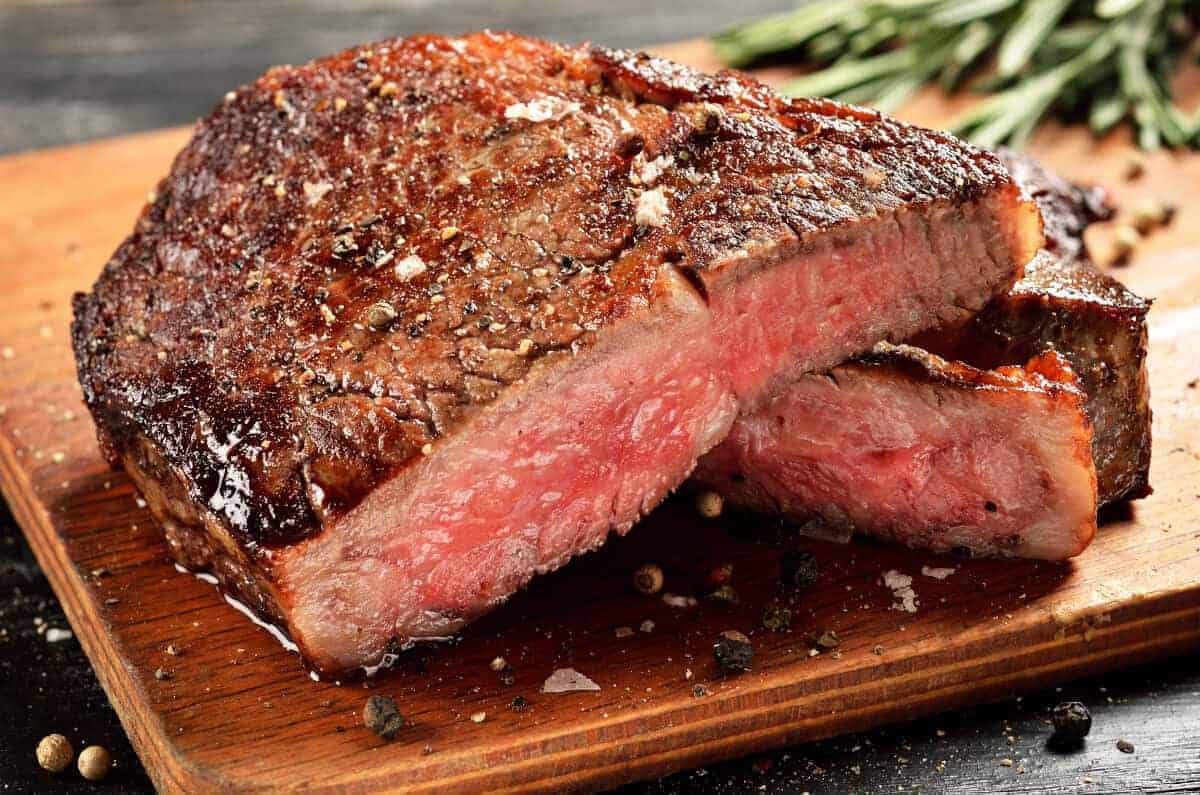
The ribeye is best cooked either in a sizzling hot pan or indirectly on a good grill or hot, flat top griddle.
An open grill does have the danger of igniting the rendered fat on open flames, so some caution is advised, and you need to pay attention and manage the cook.
Cooking on a griddle collects the fat in its ridges, preventing any flare-ups, but prevents the meat from absorbing any smoky charcoal flavors.
Here’s our simple guide to cooking your steak in a pan or on a griddle:
- Pat the steaks dry and bring to room temperature.
- Heat your skillet to high heat until it sizzles when you add a drop of oil.
- Season the steak well, not skimping on the salt, as this helps to bring out the umami flavor.
- Cook for at least 5 minutes each side until close to medium, the fat in a ribeye needs time to render and breakdown to make it tender.
- Remove from the skillet and add a knob of butter and tent in aluminum foil to retain heat.
- Allow to rest for at least 10 minutes, so it relaxes and reabsorbs the juices.
- Slice against the grain and enjoy.
3 Best Ribeye Steak Recipes from Around the Web
Now that you know how good the ribeye really is in all its unadulterated glory, it’s time to take a look at a few recipes that will show you alternative ways to cook it and what sides to pair it with:
1. Mrecipes Smoked Ribeye
This simple recipe starts with a salt and pepper seasoning and olive oil, and then smokes the ribeye to perfection, reverse searing it on the grill before pairing it with 2 intense sauces to add flavor and excitement.
The first is a spicy chimichurri sauce, and the second a smoky blue cheese sauce.
Click here for full recipe and instructions.
2. Café Delites Cajun Butter Steak Bites
From a self-confessed foodie blog comes this easy meal or snack.
The ribeye is cut into 2-inch square chunks and rubbed with Cajun spice then seared in a hot pan for 2 minutes each side.
Then comes the signature finish, they use the pan juices to create a garlic butter that they pour over the bites before serving.
Click here to see Café Delites recipe.
3. One-pan Smoky Ribeye with Sweet Potato Hash
This one will really tickle your taste buds.
Not your usual steak pairing, a hash is normally associated with ground beef, not steak. The secret is the beef is kept as a steak and the rest of the ingredients make the hash.
It includes sweet potato, cashews, sprouts, and cranberries, as well as a vinegar and feta finish.
Head here to see how hashtastic this recipe really is.
Conclusion
The ribeye is the king of flavor. Not only does it deliver a huge beefy backhand to your taste buds, but it does so while maintaining the tenderness of any other top tier steak.
So, whether you’ve been living under a rock and never heard of this cut, or you’re a ribeye aficionado, head to one of our linked recipes and go get your steak on!
However you decide to cook it, let us know your secret to perfection in the comment section below.


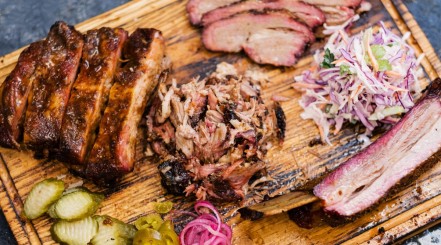
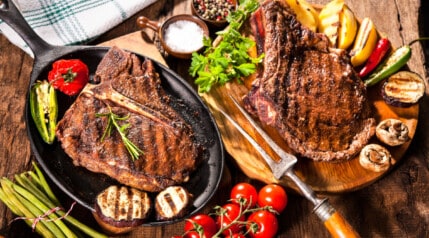

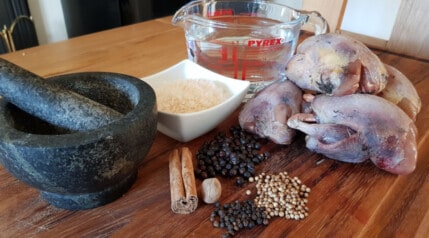
0 Comments